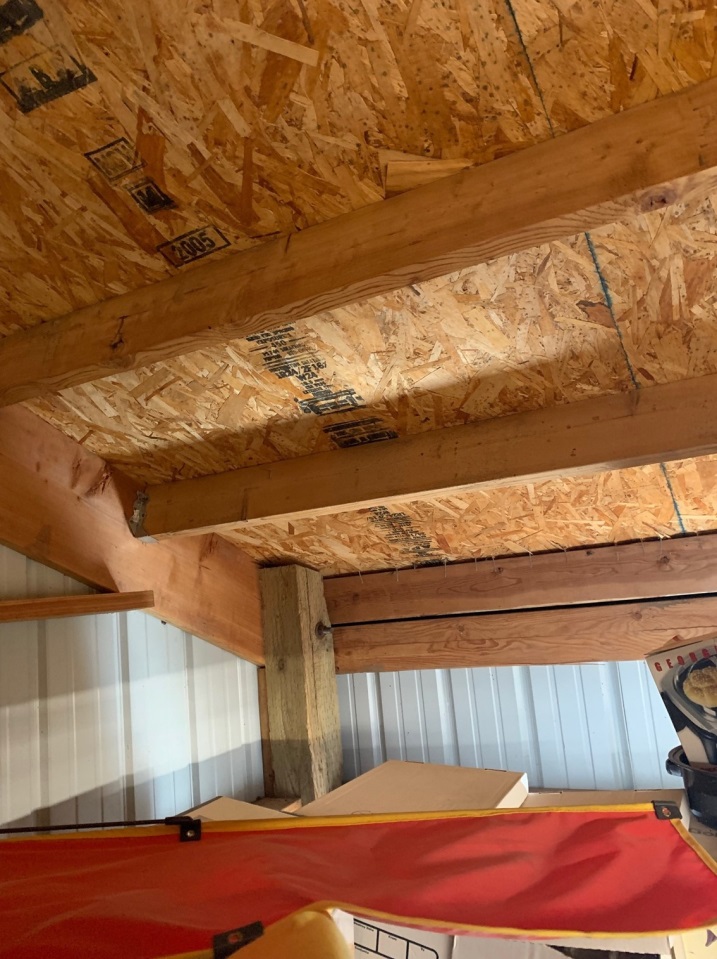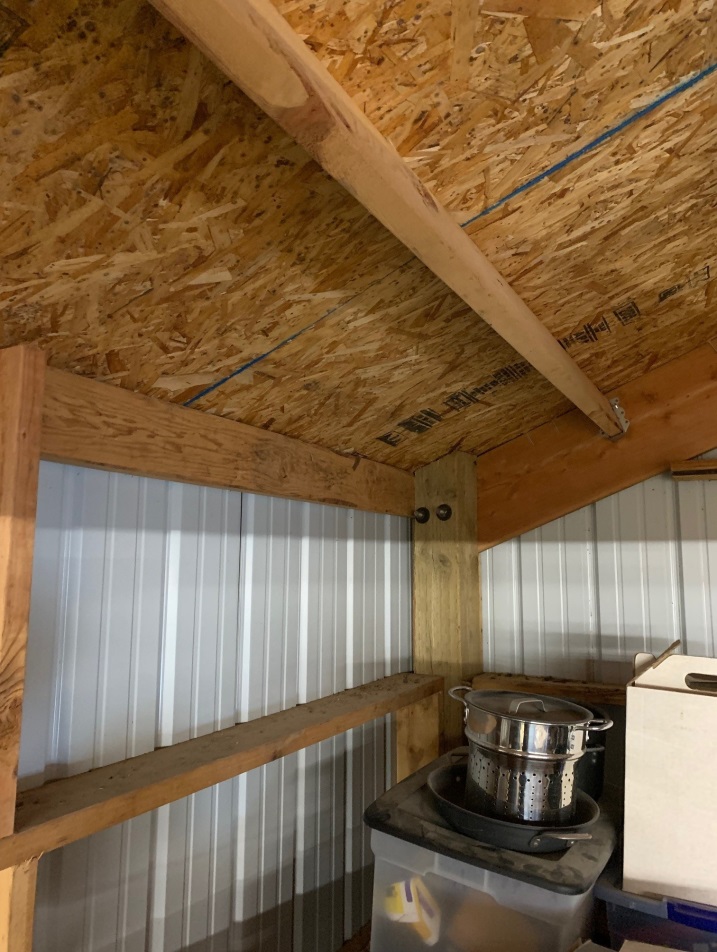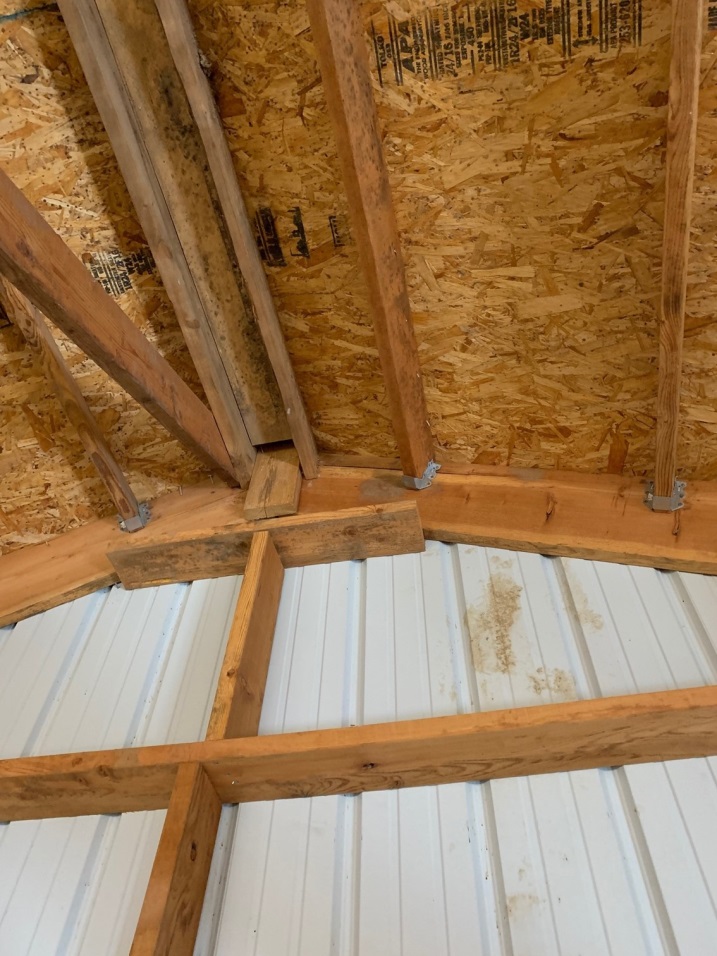Welcome to Ask the Pole Barn Guru – where you can ask questions about building topics, with answers posted on Mondays. With many questions to answer, please be patient to watch for yours to come up on a future Monday segment. If you want a quick answer, please be sure to answer with a “reply-able” email address.
Email all questions to: PoleBarnGuru@HansenPoleBuildings.com
DEAR POLE BARN GURU: I have to install OSB under metal roof sheeting of the first and last bay of the building. There are no directions for this in the book. Also, how do I make the tin roofing look right when there will be a depression in height of roof when it steps off the OSB. AGONIZING IN ALBANY
DEAR AGONIZING: Although steel roofing and siding has recognized shear values, just like OSB (oriented strand board) and plywood, there are times when the forces needing to be carried are greater than the capacity of the steel itself.
For more information on the steel testing: https://www.hansenpolebuildings.com/blog/2012/08/this-is-a-test-steel-strength/
Shear forces increase with wind speed, more critical wind exposures (C or D, instead of B), with narrow width and tall sidewalls, or when building length is large compared to building width. Shear forces are greatest approaching each endwall, as well as at the diaphragm boundaries (eave and ridge of a peaked roof).
When the steel roofing can’t carry the load, other shear carrying materials (such as 7/16” OSB) may be added to the assembly. In the case above, the shear forces in the last 12 foot bay at each end of the roof have had OSB placed between the roof purlins and the steel roofing. In order to avoid a “hump” at the transition from two layers of materials to one, the notation on the building plans advises to lower the roof purlins in these areas by 7/16”. Then the top of all your purlins, once OSB under metal roof panels is placed – will be in the same plane and the roof steel will lay flat.
Mike the Pole Barn Guru
DEAR POLE BARN GURU: I’m planning on building a pole barn using 3 1/2 inch schedule 40 pipe as my frame. I found some pre-made 4 inch pipe trusses. They measure 50 ft. wide. What would be the best way to mount those to the 3 1/2 inch pipe? Is that 4 inch pipe too heavy or overkill? Thanks. CAUTIOUS IN CALUMET
DEAR CAUTIOUS: I wouldn’t touch any of this with a 50 foot pipe! Although your pipe diameters may differ, I’ve written about “pipe” pole buildings previously: https://www.hansenpolebuildings.com/blog/2012/12/pole-building-7/ and I stand by it. Unless you are willing to spend the money to have a Registered Design Professional (Engineer or Architect) inspect your available materials and design a building for you which will actually stand up to wind and snow loads, you are just creating a money pit to failure, until it eventually collapses.
Mike the Pole Barn Guru
DEAR POLE BARN GURU: Do your continuous ridge vents keep rain out when the wind is blowing the rain horizontally? Would wind driven rain (hurricane tested) gable end vents perform better under these circumstances?
What is your Platinum Engineering Package and what does it cost? Will my plans and calculations be stamped by a California licensed engineer and engineered in accordance with the California Building Code? Without the Platinum Engineering Package, how will the building be designed and to what Code?
Where are your glulam columns fabricated for a pole building for the Central California Coast?
Quote says overhead doors and windows are not wind rated but rest of building is designed for 100mph 3 sec. gusts. Are overhead doors going to withstand the same wind load?
What is the difference between Use Classification S-2 and U? My pole barn will be an unpermitted Agricultural Building.
How is the design of the pole building effected by whether a concrete floor is installed or not? How does this affect the kit price?
How is the Foundation Pressure number determined, and where does it come from?
CURIOUS IN CALIFORNIA
DEAR CURIOUS: Lots of questions, which we appreciate. A well informed client ends up being a happy client.
Here is the information on the continuous ridge vents we supply (The LP2): https://www.marcoindustries.com/products/ventilation
Gable end vents are generally a poor attic ventilator – looking from the sky down, the ventilation pattern resembles an hourglass shape, good ventilation at each end, but very poor as one nears the center of the building.
The Platinum Engineering Package includes two sets of California engineer sealed blueprints and all of the verifying calculations sealed by the engineer. It also includes the conceptual drawings of how the building will look when it’s done. CA usually requires these, although there is nothing structural shown on these views. They are the “pretty drawings” HOA’s usually require to ensure the building is going to conform to the rest of the neighborhood and “fit in”. The building will be designed the same, and to the same Code whether the plans are sealed or not. Hansen Buildings never “cheaps out” on designs and engineering if you don’t purchase the top engineering package. In all cases, we recommend buildings in California to be constructed from engineer sealed plans – it avoids challenges in the event of initial miss-purposing which would require a building permit, or if the building is repurposed at a later date (which frequently occurs). Some insurance companies offer discounts on engineer designed buildings https://www.hansenpolebuildings.com/blog/2014/04/nationwide-2/
While your particular quote did not include glulaminated columns, when projects in California require (or request) glulaminated columns they most often are produced by the Calvert Company in Vancouver, Washington https://calvertglulam.com/
The overhead doors will not withstand the same wind load, unless you opt for wind rated doors, which is strongly recommended. https://www.hansenpolebuildings.com/blog/2011/10/wind-rated-garage-doors/
Here are the definitions: S-2 https://publicecodes.cyberregs.com/icod/ibc/2012/icod_ibc_2012_3_par063.htm and U https://publicecodes.cyberregs.com/icod/ibc/2012/icod_ibc_2012_3_sec012.htm
The structure would normally be identical, unless the Risk Category (See Table 1604.5) is changed: https://publicecodes.cyberregs.com/icod/ibc/2012/icod_ibc_2012_16_par023.htm
In most cases whether a building does or does not have a concrete slab at time of construction will not change the building or its costs. Having a properly constrained concrete floor does reduce the shear forces needing to be carried by the building by 25%. Where this CAN affect the building cost is in buildings with one or more of the following: high wind speeds, more extreme wind exposure conditions (C or D as opposed to B), very tall in relationship to width, very long in relationship to width.
Here is where Foundation Pressure numbers come from (See Table 1806.2): https://publicecodes.cyberregs.com/icod/ibc/2012/icod_ibc_2012_18_sec006.htm?bu2=undefined
Mike the Pole Barn Guru



 We look for trends in questions asked by owners of existing pole barns – usually not even those we provided! There are a couple of these our team has decided to address and we have so far done a very poor job of letting our clients know we have done so.
We look for trends in questions asked by owners of existing pole barns – usually not even those we provided! There are a couple of these our team has decided to address and we have so far done a very poor job of letting our clients know we have done so.





